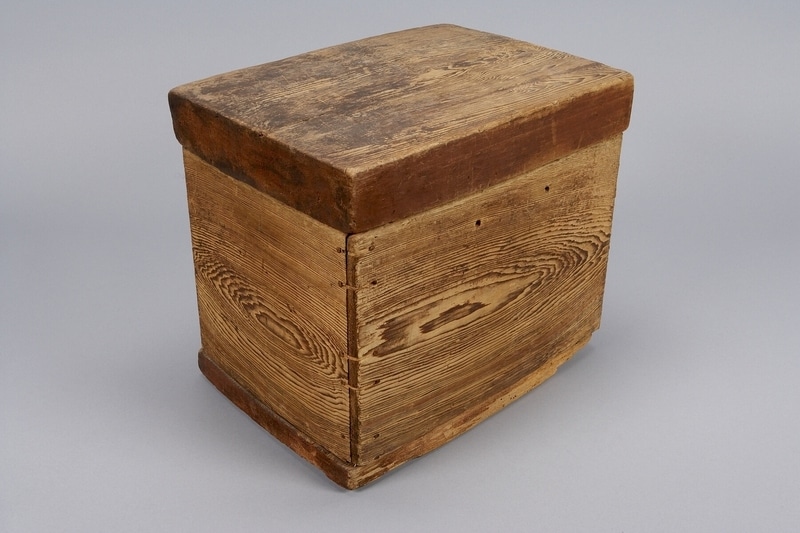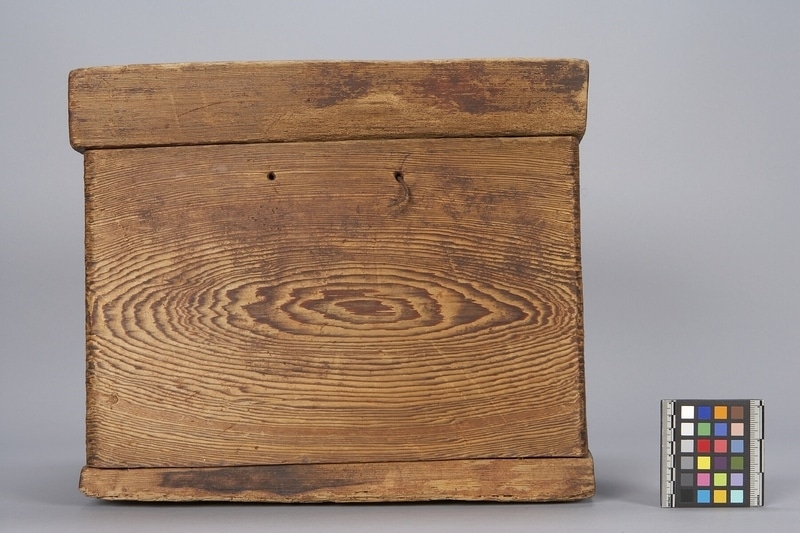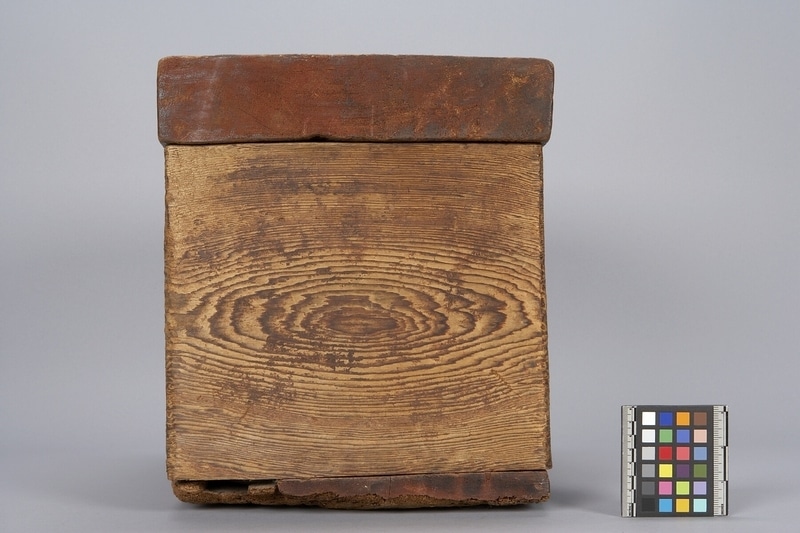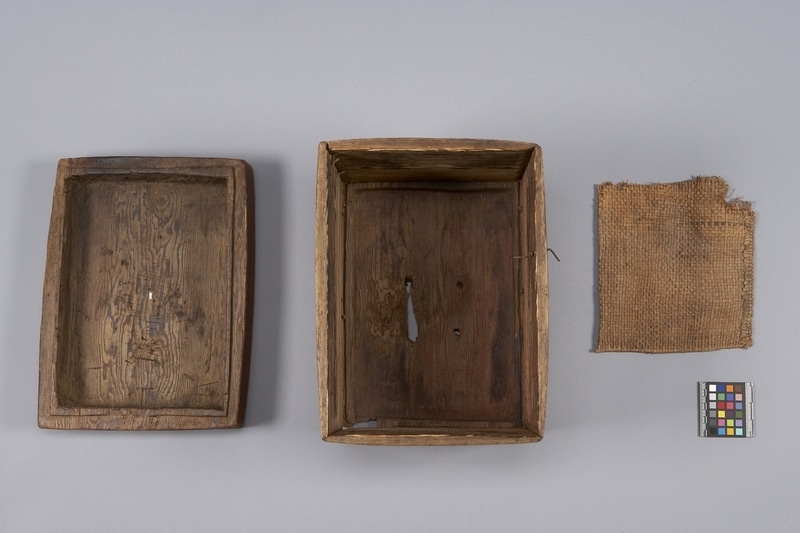Bentwood Box Item Number: 804/6 a-c from the MOA: University of British Columbia




Description
Bentwood box, fastened with cedar bark at seam, with base (part a), lid (part b) and woven cedar pouch inside (part c). Outside edges of lid and base covered in red ochre; traces of ochre over entire outer surface. Two sides each have two small holes for handles of which only a small piece remains.
Narrative
Possibly an old shaman's box or mortuary box, based on the red ochre, its shape and the condition of its base. According to Livingston (2004) this box would not have held human remains, but could have been associated with a mortuary site.
Specific Techniques
Bentwood, or kerfed-corner, containers are constructed by a process unique to the Northwest Coast Aboriginal peoples. The carver begins with a single straight-grained plank of red cedar, or sometimes yellow cedar, spruce, or yew. The surface of the plank is finished with chisels, adzes, and knives; in earlier times, it was smoothed further with sandstone or dried sharkskin. Then three parallel kerfs, or grooves, are carved out at measured points across the width of the board, at right angles to the long edge. The kerfs, which will become three corners of the box, allow the board to be steamed until the wood fibres are softened, and then carefully bent to form a box with symmetrical sides. The final corner, as well as a fitted base, are joined and fastened with pegs (through drilled holes) or laced with spruce root or twisted cedar withes (branches). Storage boxes also have fitted lids of cedar, hollowed from the inside. Finally, painted compositions may be applied to the completed box and shallow carving added to bring the forms into relief. A well-made bentwood box is watertight. Historically, most boxes were used to store preserved foods and material goods; plain cooking boxes could be used to steam or boil food by adding water and heated stones.
Item History
- Made in British Columbia, Canada ?
- Owned by Love's Auctioneers & Appraisers Ltd. before March 31, 1982
- Received from Love's Auctioneers & Appraisers Ltd. (Seller) and Barrett Montford Endowment Fund (Funding source) on March 31, 1982
What
- Name
- Bentwood Box
- Identification Number
- 804/6 a-c
- Type of Item
- box
- Material
- wood, root ?, ochre pigment and cedar bark
- Overall
- height 35.0 cm, width 40.7 cm, depth 30.7 cm
Who
- Culture
- Northwest Coast
- Previous Owner
- Love's Auctioneers & Appraisers Ltd.
- Received from
- Love's Auctioneers & Appraisers Ltd. (Seller) and Barrett Montford Endowment Fund (Funding source)
Where
- Holding Institution
- MOA: University of British Columbia
- Made in
- British Columbia, Canada ?
When
- Ownership Date
- before March 31, 1982
- Acquisition Date
- on March 31, 1982
Other
- Condition
- fair
- Accession Number
- 0804/0006 a-c